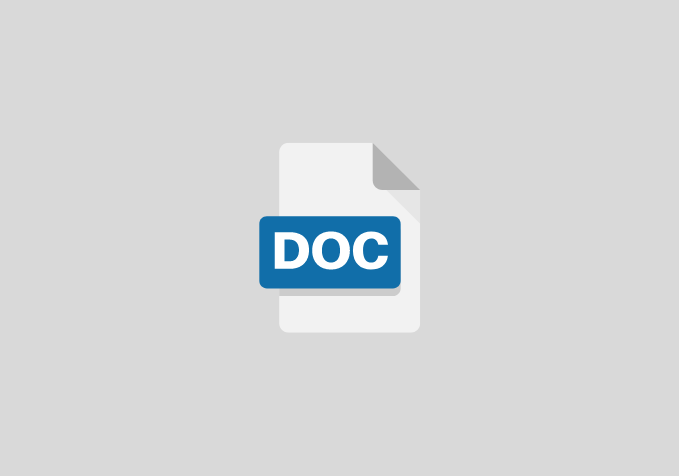Production of Disinfectant
CHAPTER ONE
OBJECTIVES OF THE STUDY
To learn how to produce disinfectants in various homes rather than going for commercial ones.
To test the efficacy of the product (disinfectant) produced in this research work.
To use this production as an opportunity to acquired skills in the schools, thereby creating jobs for the unemployed and making them self- reliant.
CHAPTER TWO
LITERATURE REVIEW
Disinfectant is substances that kills or inhibits the growth of harmful micro-organism. They consist of an active ingredient, a biocide, to which other compounds are added to make a marketable product. Depending on the product they are supplied to consumers in solid, liquid and gas form. Disinfectants are generally understood to be made for application to inanimate object, whereas antiseptics are medical agents applied to wound. Examples of the use of disinfectants are; household application (kitchen, bathroom cleaners), industrial plant sanitation, hospital application (cleaning and infection control, instrument sterilization), water treatment and sewage treatment (William, Susan, Newman, Mark and David, 2000).
ORIGIN DISINFECTANTS
The first disinfectant, carbolic acid better known today as phenol, was introduced into the operating room by Joseph Lister in the late 19th century.
As a result past operative infections were dramatically reduced and the science of disinfectants was born. Man’s desire to end disease has led to the development of many different chemical compounds that kill pathogenic microorganisms.
865 AD Ethanol, discovered by Iranian Chemist Rasis and was used in 1763 in a Paris hospital for dressing wounds.
In 1778, IJ. S Navy pharmacopeia listed acidulated water (Vinegar), as a disinfectant, 1789, the French chemist Berthollet discovered hypochlorite’s.
CHAPTER THREE
MATERIALS AND METHODOLOGY
MATERIALS AND REAGENTS USED
- Methanol 5 Litres
- Pine oil 1 Litre
- Carbolic acid 240 Ml
- Chlorozinol 200 Ml
- Texapon 100 g
- Colourant 30 Ml
- Measuring Cylinder
- Weighing Balance
- Syring
- Big Stirrer
- Glove
- Big Container
CHAPTER FOUR
RESULTS AND DISCUSSION
RESULTS
The production of disinfectant with high quality and quick ability to kill germs, was produced by proper mixing of chemical reagents as an active ingredient. Methanol, pine oil, texapon, casbolic acid, chloroxynol and colourant were the basic component disinfectant in this project work.
CHAPTER FIVE
CONCLUSION AND RECOMMENDATION
CONCLUSION
Considering the rate at which infections and disease causing micro-organisms are ravaging the health of people in our society, hence the need for the production of disinfectants.
This project work focus the production of disinfectant for the reduction of microbes through the availability of disinfectants in rural area, which will help in sanitizing the surroundings.
The production of disinfectants involved the use of the following raw materials as active ingredients, methanol, pine oil, texapon, carbolic acid, chloroxynol and colourant in right proportion and proper mixing.
RECOMMENDATION
Attention should be given in encouraging young entrepreneurs to acquire more skills in production of disinfectants.
More efforts should be geared by researchers in developing different ways and formulation for the production of disinfectants.
Skill acquisition in production of disinfectant will create job opportunities among the unemployed in our society.
I recommend government funding of small scale business and provision of raw materials for the production of disinfectants.
REFERENCES
- Cleaning and disinfecting, (2009), Mid Sussex District Council, UK.
- Ewart. SL. Disinfectants and Control of Environmental Contamination. In: Smith B.L. editor. Large Animal Internal Medicine: Disease of horses, cattle, sheep and goats. 3rd edition. (2001). St. Louis: Mosby. Pp. 1371-1380.
- FDA/CFSAN-Food Safety A to Z Reference, “Bacteria”http://vm. cfsan. fda. gov/~dms/ a2z-b.html
- Http://www.health.ny.gov/professionals/protocols and guidelines/antibiotic resistance/docs/hospital disinfectants for general disinfection of environmental surfaces. Pdf
- Http://www.cdc.gov/oralhealth/infectioncontrol/glossary.htm
- Http://www.state.nj.us/health/eoh/cehsweb/bleach fs.pdf
- Infection Control Guidelines (1998). Handwashing, Cleaning, Disinfection and Sterilization in Health care. CCDR 24S8, Health Canada.
- Lages S.L, Ramakrishnan M.A, Goyal S.M (2008). “In- vivo efficacy of hand sanitisers against feline calicivirus: a surrogate for norovirus”. The Journal of Hospital Infection 68 (2): 159-63.


